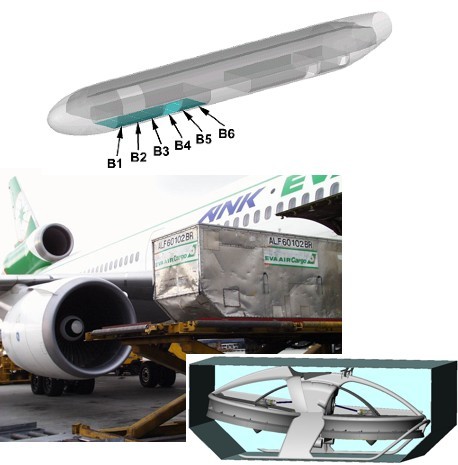I got a kick out of this article, and I really enjoyed reading the contract methods and processes that these towns went through in order to accomplish efficiency and privatization. There are a lot of great quotes in this one, and I figured I would share a few that jumped out at me.
The first is about the process in which the city of Sandy Springs moved to this privatized model and how it seems to be working really well for them.
As a fan of Ronald Reagan and the economist Friedrich Hayek, Mr. Porter came naturally to the notion that Sandy Springs could push “the model” to its nth degree. His philosophical inclinations were formed by a life spent in private enterprise, and cemented by a visit to Weston, Fla., a town that had begun as a series of gated communities.
Mr. Porter tells this and other stories in “Creating the New City of Sandy Springs,” a book that will leave readers with one indelible lesson: incorporating a city is dull. Super duper dull. The book is composed mostly of the codicils, requests for proposals and definitions of duties that were required to jolt Sandy Springs to life. Without a love of minutiae and a very long attention span, forget it. But this is intended as a blueprint, not a gripping narrative. Mr. Porter regards the success of Sandy Springs as a way out of the financial morass that has engulfed so many cities in the aftermath of the Great Recession.
“Many are on the verge of bankruptcy,” Mr. Porter says. “They have significant unfunded liabilities, like pensions and other benefits. It’s almost like a poison that a lot of people are unaware of, and this model could be an answer.”
There are a couple of things here that I recognized, that has some commonalities with today’s contingency contracting game in the war. That FOB’s in war zones are basically small cities, that are a public/private partnership in a few ways. FOB privatization is quite evident if you ever have a chance to work on one. From the KBR chow halls, to the Dyncorp auto shops or aircraft servicing, to CADG/IAP construction, to security performed by contractors on the perimeter and the various internal camps. The key offensive duties are performed by the military, but everything else is privatized.
Not only that, but this move to privatize as much as you can during wartime also reflects budgeting realities. A contractor does not have legacy costs like a soldier does. Things like a pension and other long term personal costs are things that add up over the life of that veteran, and you do not have to worry about that with contractors. To give you an example of how big the costs are, and how worried the pentagon is about these legacy costs, check this quote out from another article I found.
The Pentagon’s retirement benefits bill will only get larger after 2014, creating a major financial problem as annual military spending is slated to decline after a decade of war.
Yearly military retirement payments alone are expected to more than double by 2035, growing from $52.2 billion in 2011 to $116.9 billion, according to an estimate prepared by the Defense Business Board, which reports directly to the defense secretary.
More broadly, the Bipartisan Policy Center study further highlights what some call the military’s “people problem.”
“In 2017, the DOD plans to have 100,000 fewer troops, but still spend as much on personnel as today,” states the report.…Military officials said they have spent around $245 billion on personnel costs in 2010, more than a third of the $636 billion appropriated that year to the Defense Department. Some analysts put the actual number at more than $300 billion.
Pentagon officials are increasingly concerned about the growing costs, saying health care expenditures alone have swelled over the last decade by over $30 billion, from $19 billion to $50 billion annually.
James Jones, a former national security adviser to President Barack Obama and a retired Marine Corps general, told reporters last week that when any organization spends so much on its employees it has “big problems.”
I highlighted that last part, just to emphasize that what is happening in the military is what was happening to Sandy Springs, and this city made the jump to privatize just so they can stay in the black.
The other part that perked me up is the contracting method that the city uses. I liked their Miss America analogy. lol
Mr. McDonough, the Sandy Springs city manager, says the town has sidestepped such problems. The key, he explains, lay in the fine art of drafting contracts.
Initially, and for the first five and a half years of its life, Sandy Springs used just one company, CH2M Hill, based in Englewood, Colo., to handle every service it delivered. Mr. McDonough says CH2M saved the town millions compared with the cost of hiring a conventional public work force, but last year Sandy Springs sliced the work into pieces and solicited competitive bids.
When the competition was over, the town had spread duties to a handful of corporations and total annual outlays dropped by $7 million. (Representatives of CH2M, which still has a call-center contract, said at the time that they were “deeply disappointed” by the results, but wished the city well, according to a local news report.)
To dissuade companies from raising prices or reducing the quality of service, the town awarded contracts to a couple of losing bidders for every winner it hired. The contracts do not come with any pay or any work — unless the winning bidder that prevailed fails to deliver. It’s a bit like the Miss America pageant anointing the runner-up as the one who will fulfill the winner’s duties if, for some reason, Miss America cannot.
“In most cases, Miss America serves her whole term,” Mr. McDonough says, warming to the analogy. “But every once in a while something happens and they don’t have to run a whole new competition.”
I kept scratching my head here to see if this contracting method was derived from something being done in contingency contracting now, or if there is a different term for it. (feel free to say so in the comments)
The big one here is that the town found a way to navigate the principal-agent problem, and write up contracts that benefit both parties. That the city actually has a means of booting out the poor contractor and instantly go to the backup contractor, as opposed to going through the whole rebidding process again. Nice.
It is that mechanism that allows a city to exercise their right to demand good service, and punish for bad service without a major shock to the system. If only today’s contingency contracting for wars was set up to be more fluid like this. To be able to have standby contractors, ready to jump in if another contractor fails to deliver, and have a government contracting agency that actually fires poor contractors when they suck. That would be great, but I also realize that the size/scope/complexity of contingency contracting just doesn’t lend itself to easily do something like that. But still, there might be something we can learn from Sandy Springs…. –Matt

A Georgia Town Takes the People’s Business Private
By David Segal
June 23, 2012
If your image of a city hall involves a venerable building, some Roman pillars and lots of public employees, the version offered by this Atlanta suburb of 94,000 residents is a bit of a shocker.
The entire operation is housed in a generic, one-story industrial park, along with a restaurant and a gym. And though the place has a large staff, none are on the public payroll. O.K., seven are, including the city manager. But unless you chance into one of them, the people you meet here work for private companies through a variety of contracts.
Applying for a business license? Speak to a woman with Severn Trent, a multinational company based in Coventry, England. Want to build a new deck on your house? Chat with an employee of Collaborative Consulting, based in Burlington, Mass. Need a word with people who oversee trash collection? That would be the URS Corporation, based in San Francisco.
Even the city’s court, which is in session on this May afternoon, next to the revenue division, is handled by a private company, the Jacobs Engineering Group of Pasadena, Calif. The company’s staff is in charge of all administrative work, though the judge, Lawrence Young, is essentially a legal temp, paid a flat rate of $100 an hour.
“I think of it as being a baby judge,” says Mr. Young, who spends most of his time drafting trusts as a lawyer in a private practice, “because we don’t have to deal with the terrible things that you find in Superior Court.”
With public employee unions under attack in states like Wisconsin, and with cities across the country looking to trim budgets, behold a town built almost entirely on a series of public-private partnerships — a system that leaders around here refer to, simply, as “the model.”
(more…)




